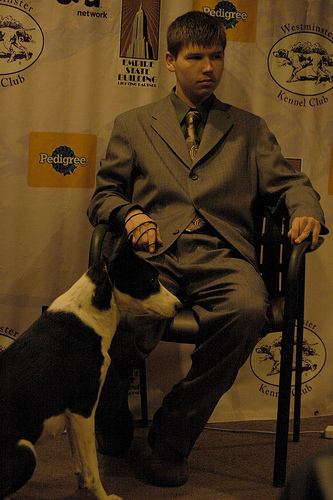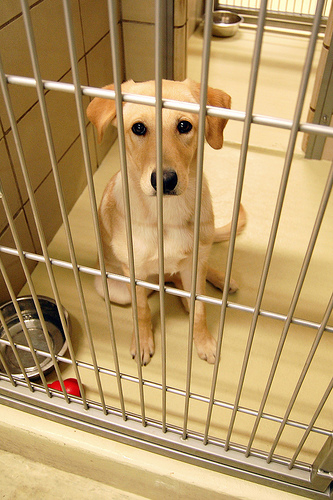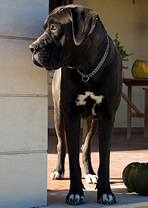
Does your dog start salivating when you have steak for dinner? Does your cat come running from the other end of the house when it hears the bag of its favourite treat being opened? If you quantify the amount of drool coming out of your dog’s mouth, you might well say “My dog’s favourite food is steak.” The food that makes dogs drool the most is the best! I’m sure most of us do this but this is not the complete story. What about cats? How do you measure the cat’s idea of what “tastes good?” They do not tend to drool. In this article we will answer some of those burning questions on why and how dogs and cats decide their favourite foods.
Here’s an appetizer to get you started: humans have 9000 taste buds, dogs 1706, and cats 473. It is immediately apparent that the difference in numbers of taste buds contributes to the ability of animals to distinguish between tastes. Dogs and cats tend to show a preference for more general taste categories. One of these categories is “bitter.” Dogs, and especially cats, have a great aversion to bitter tastes. This is pretty much where their similar food preferences end.
What menu is the most salivating for canines? Meat! More specifically, any kind of meat. However, even though dogs love meat, they are omnivores. This means that they must eat more than just meat to have a healthy diet. An interesting note is that the sense of smell is absolutely crucial in determining what foods a dog enjoys. If a dog is deprived of its smell it will not be able to differentiate between meat from different animals such as beef, pork, and poultry. This can lead to refusal to eat, weight loss, and can become very serious if not addressed. Another thing that can lead to unappetizing food for your pet is low quality or rancid fat. Normally, fat is actually very tasty (to your dog at least!) and makes the food highly palatable. Thus, fatty meat that smells good is a favourite for the majority of dogs.
The finicky feline has quite a different menu from the dog. To begin with, cats are strictly carnivores. They need certain amino acids that can only be acquired though eating meat to get these animal proteins. If cats do not get these specific amino acids, such as Taurine, they will become very ill and can even die. We’ve established that meats with the essential amino acids are definitely on the cat menu, but what type of meat is their favourite? Fish is probably the first answer that pops to mind. After all, fish and cats just seem to ‘go together.’ Though many cats prefer fish to meat, this varies greatly among individuals. Some may even dislike the taste of fish! Let’s tackle another myth: milk, although many cats may appear to savour its taste, it is very unhealthy for them! Cats do not have the enzymes necessary to properly digest milk. This can lead to health issues. If you’re thinking, “Wow, cats sure are picky!” you have not seen anything yet! Here’s the kicker: cats pay a LOT of attention to the texture, size and shape of their food. This is universal for all cats though. Each cat likes certain types of food based on these, and other requirements. Some cats become so accustomed to their kibble at a young age that they will not eat anything else. Others will randomly decide they do not like their food anymore multiple times throughout their lives. Basically, the cat menu for favourite foods is just as fickle as our felines. They share the love of fatty meat that smells good with dogs, but the texture size and shape are just as important in determination of a favourite food.
We have discussed that cats and dogs have food preferences, but what if they eat something they do not like? Do they learn from this mistake? Dogs have a particular problem with learning from their mistakes. This is especially true of dogs that seem to be more food driven, for example, Labrador Retrievers, also known as “vacuum cleaners.” If a certain food makes a dog ill, they are likely to forget about this within 24 hours and not think twice about ingesting it for a second time. Talk about short-term memory! Cats, on the other hand, are a little more intelligent in this manner. They remember about a bad experience with food for several weeks. On the whole, our pets over the long term do not develop aversions to food based on bad experiences, so keep the dog away from the kitchen table!
Now that we’ve gone into differences between dogs and cats, let’s figure out how this would relate to the way that we respond to food. We share our uncertainty trying new foods with our pets. After all, why try something new when what you’ve had every other time is just so darn good? The rationality behind our thinking is usually one of adventure and looking to find something that tastes even better. Dogs and cats do like to try new foods, but they are more comfortable with foods that have some similarity to what they have eaten before. Here’s a good example of human preferences in taste. You are ordering a pizza. You like pepperoni, Bob likes anchovies, and Sally is a vegetarian. You only have money for one pizza, and want to get something that everyone likes. However, Bob will not eat the pizza unless it has anchovies because he loves the unique taste they have. You are unwilling to try anchovies – they look like little fish, gross! Sally will not eat any kind of meat. As witnessed with this scenario, even one ingredient can stop someone from eating a specific food. Believe it or not, our pets can also be this ‘picky’ in the foods that they will or will not eat. Certainly, all pets seem to develop individual preferences for specific ingredients and or flavours. It is our job as their owners to try and tickle their taste buds with nutritional foods that are actually good for them! Sorry, Rover, no steaks every meal for you!
By Laura Platt – Pets.ca writer
 Junior Handler Shows Canaan Dog with Seizure Alert Skill - Westminster 2010
Junior Handler Shows Canaan Dog with Seizure Alert Skill
Junior Handler Shows Canaan Dog with Seizure Alert Skill - Westminster 2010
Junior Handler Shows Canaan Dog with Seizure Alert Skill
 5 Tips To Reduce Shedding
5 Tips To Reduce Shedding
Dog hair everywhere? Do you feel
5 Tips To Reduce Shedding
5 Tips To Reduce Shedding
Dog hair everywhere? Do you feel
 Cane Corso Breeder Interview Breeder Interview: Virginia Dunn Discusses The Great Italian Mastiff
Cane Corso Breeder Interview
The Dog Guide is pleased to p
Cane Corso Breeder Interview Breeder Interview: Virginia Dunn Discusses The Great Italian Mastiff
Cane Corso Breeder Interview
The Dog Guide is pleased to p
 Dogs :: 3 Reasons Why You Would Want a K9 Unit (Page 1 of 2)
K9 units or dog units are glorified in movies. If you have w
Dogs :: 3 Reasons Why You Would Want a K9 Unit (Page 1 of 2)
K9 units or dog units are glorified in movies. If you have w
 Pit
Are we the ones frightened or are we the ones
Pit
Are we the ones frightened or are we the ones
Copyright © 2005-2016 Pet Information All Rights Reserved
Contact us: www162date@outlook.com